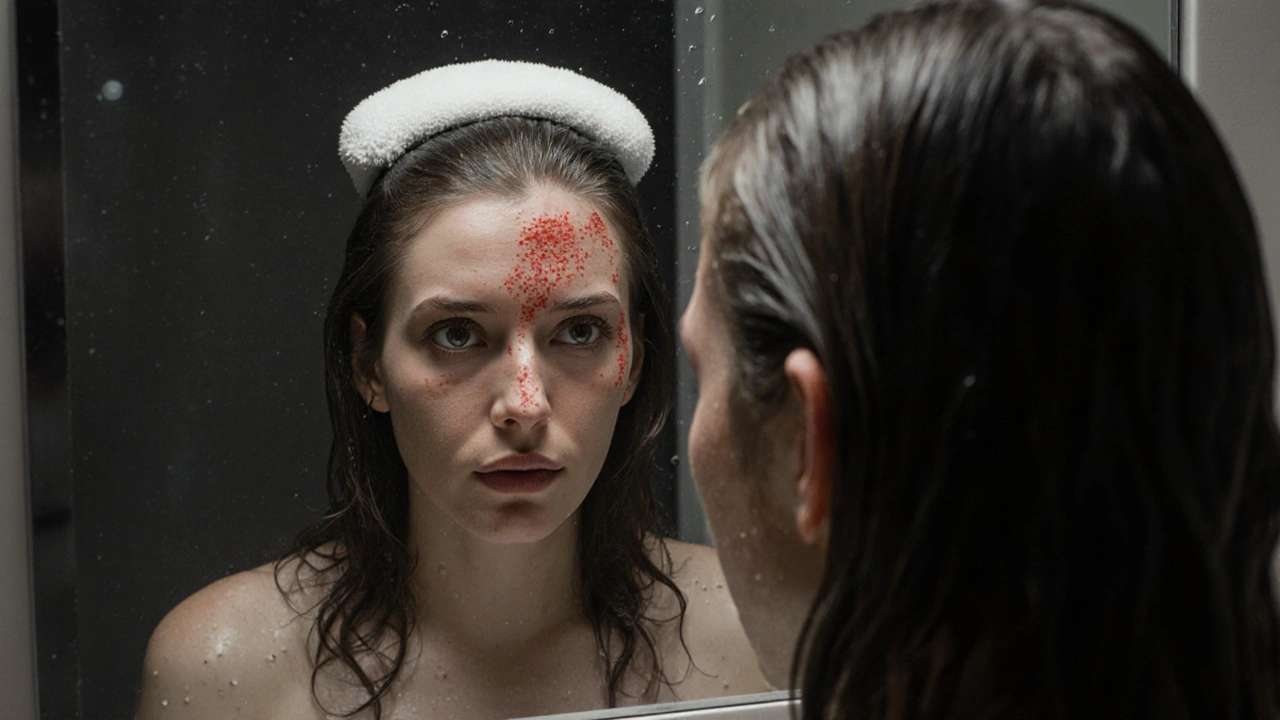When your scalp burns, swells, or breaks out in red bumps after coloring your hair, you're not just sensitive—you might have a hair dye allergy, an immune response to chemicals in hair color, especially PPD (paraphenylenediamine). Also known as contact dermatitis from hair color, this isn't just a bad reaction—it's your body saying no to certain ingredients. It’s not rare. Studies show up to 1 in 10 people who dye their hair experience some level of reaction, and many don’t realize it’s an allergy until it’s too late.
The biggest culprit? PPD, a chemical used in most permanent hair dyes to create long-lasting color. It’s cheap, effective, and invisible on the label—often hiding under "coloring agents" or "aromatic amines." But it’s also the top reason people end up with swollen eyelids, blistered scalps, or even trouble breathing. Even if you’ve dyed your hair five times without issue, your body can suddenly decide it’s had enough. That’s why a simple patch test, a 48-hour skin test done before applying dye to your head. isn’t optional—it’s your first line of defense.
But you don’t have to give up color. There are safer paths. hypoallergenic hair dye, formulas that avoid PPD and ammonia, often using plant-based pigments or natural dyes like henna. These won’t give you the same bright platinum as a salon bleach job, but they’re gentle enough for sensitive skin. Brands like Herbatint, Naturtint, and Madison Reed offer PPD-free options that still deliver real color. And if you’re worried about damage, many of these dyes include conditioning oils that actually help your hair instead of stripping it.
Some people think switching to box dye at home is safer—but that’s a myth. Most drugstore dyes contain the same irritants as salon formulas. The difference? Salons can spot early signs of a reaction and stop before it turns dangerous. They also know how to blend colors without harsh chemicals, using techniques like balayage or gloss treatments that avoid direct scalp contact.
If you’ve had a reaction before, your best move isn’t to avoid color forever—it’s to learn how to do it right. Always patch test. Avoid dyeing your hair right after a sunburn or chemical peel. Skip the heat styling for 48 hours after coloring. And if your skin reacts, wash it off immediately and see a dermatologist. Don’t wait for the next time.
Below, you’ll find real stories and practical tips from people who’ve dealt with hair dye allergies—how they found their safe color, what products worked, and how to talk to your stylist about your needs without sounding like you’re asking for a miracle. This isn’t about fear. It’s about knowing your limits and still getting the look you want—without the itch, the burn, or the panic.

Your hair didn't turn grey from brown box dye-it's likely an allergic reaction causing swelling and inflammation that makes the color look off. Learn the real cause and what to do next.